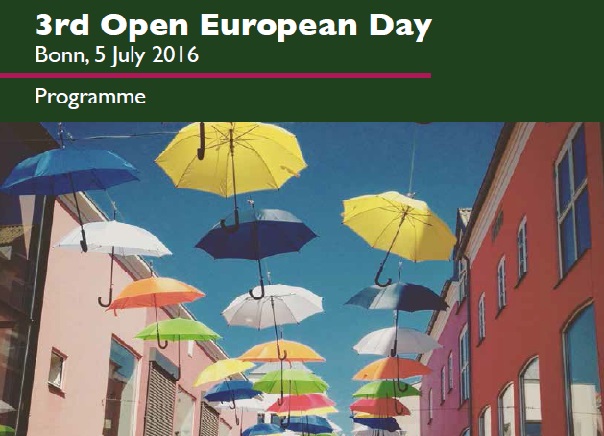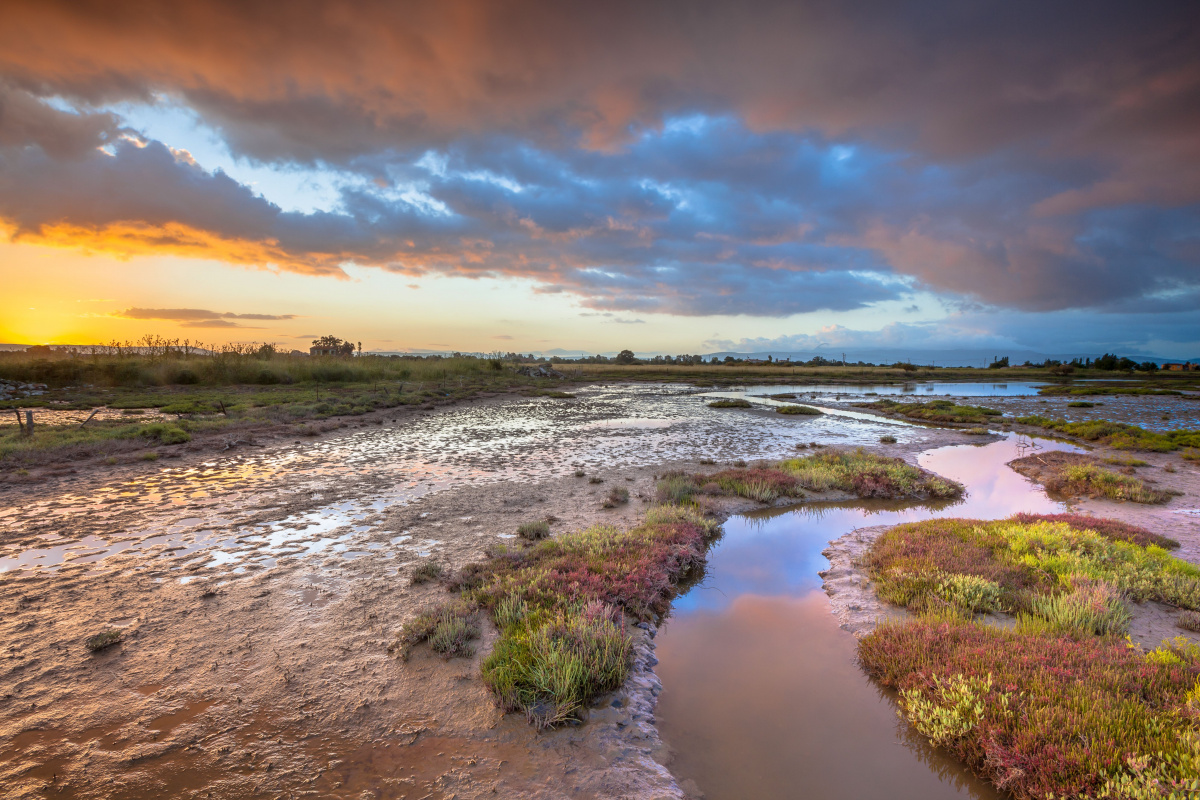Towards the implementation of nature-based solutions in cities
The Resilient Cities European Open Day is an annual event, focusing on the exchange between cities and other stakeholders on climate adaptation. Jointly organised by ICLEI and the European Environment Agency on 5 July 2016, this year’s thematic focus areas were: climate services for informed decision making, nature-based solutions, mainstreaming adaptation by integrating different local planning processes and exploiting co-benefits and opportunities for combining climate change mitigation and adaptation measures and financing adaptation.

Photo: EEA/ICLEI
Cities around the world have taken the lead in demonstrating their commitment to biodiversity protection and acknowledging nature’s values. They have shown that investing in nature and green areas – such as parks, green roofs, forests, rivers, wetlands, city gardens and allotments – can lead to substantial social, economic and environmental benefits by reducing pollution, decreasing energy costs, improving health and well-being and increasing resilience to climate change and natural disasters. Despite these success stories however, society’s dependence on well-functioning ecosystems is still not fully recognised within planning and policy making, and nature continues to be treated separately from socio-economic issues. Holistic approaches are needed to overcome these divides and forge an integrated path towards sustainable development.
Chantal van Ham, EU Programme Manager Nature Based Solutions at IUCN facilitated the session, “Towards implementing nature-based solutions,” which zoomed in on the policy and economic arguments in favour of the implementation of nature-based solutions (NBS) in cities as well as on financial instruments available to upscale them further. The session unfolded in a lively exchange between panel and audience, on how to overcome the divide between nature and socio-economic challenges and work towards lifting the obstacles to implementing nature-based solutions in cities.
Wolfgang Socher, Head of Urban Ecology Group of the City of Dresden, explained that Dresden is a very biodiverse city, situated on the river Elbe, but suffered from three floods within 15 years and several heatwaves, leading to high damage costs. Nature-based solutions, which are integrated in the landscape plan, can help prevent these problems while providing multiple benefits: flood protection, water provision, biodiversity, urban climate regulation and recreation. However, the reality is that moving from damage control to prevention is a real challenge and so is the financing of nature. Currently, the main source of funding for NBS comes from the regulatory compensation of loss of land due to urban development by unsealing and creating space for nature elsewhere.
David Jamieson, Head of Edinburgh’s Parks Service shared the experiences of the Edinburgh Living Landscape initiative, a partnership between the City of Edinburgh Council, Edinburgh University, the Scottish Wildlife Trust, Royal Botanic Garden Edinburgh and the Edinburgh & Lothian Greenspace Trust to naturalise the city’s public and private green spaces. Each organisation has provided its key strengths so that the collective change is greater than what could be achieved independently. As a result, Edinburgh’s green spaces have been mapped, an ecosystems approach to planning policy was adopted and the connection between communities and the city’s parks has increased. Essential for the city is a positive message of change, understanding the value of nature, valuing natural assets, saving costs and searching for alternative sources of financing.
Stefanie Lindenberg, Coordinator of the Natural Capital Financing Facility (NCFF) of the European Investment Bank explained how the NCFF aims to finance market-based projects investing in biodiversity and nature-based adaptation. The NCFF will provide financial support to projects in order to generate revenue or save costs. In doing so, the Facility aims to prove to the market and to potential investors the attractiveness of biodiversity and climate adaptation operations in order to promote sustainable investments from the private sector. The NCFF has a budget of €120 available for projects ranging between €1 and €15 million, financing up to 75% of the value of the project.
Stefan Brenneisen, Head of urban ecology research group and lecturer Zurich University of Applied Sciences, has been involved for over 20 years in the development of building codes, guidelines and planning related to green roofs in the city of Basel, Switzerland. The city currently has a high density of green roofs (6 m2 per inhabitant) due to a series of subsidies generated through the energy saving fund of Basel and the legal obligation, as part of the building code, to make all new flat roofs green. What is unique about Basel’s approach is that green roofs are not planned as ‘roof gardens’ but as near natural habitats, using regional materials and native plants.
The interaction with the audience brought forward an interesting exchange on a range of challenging questions: how to generate an income from investment in nature?; Does climate change have over the course of time have an impact on NBS that are implemented?; Is it ethically acceptable to quantify benefits of nature, even if that is the language urban developers, decision makers, politicians and investors work with? How do we change the current system by raising awareness on the value of nature? Not all of these questions could be fully answered, but by sharing their views and experiences, the panel members triggered further thinking and debate, that will certainly be taken away with the participants and support the further uptake of nature-based solutions.
More information on the 3rd Open European Day at Resilient Cities 2016 can found here.



